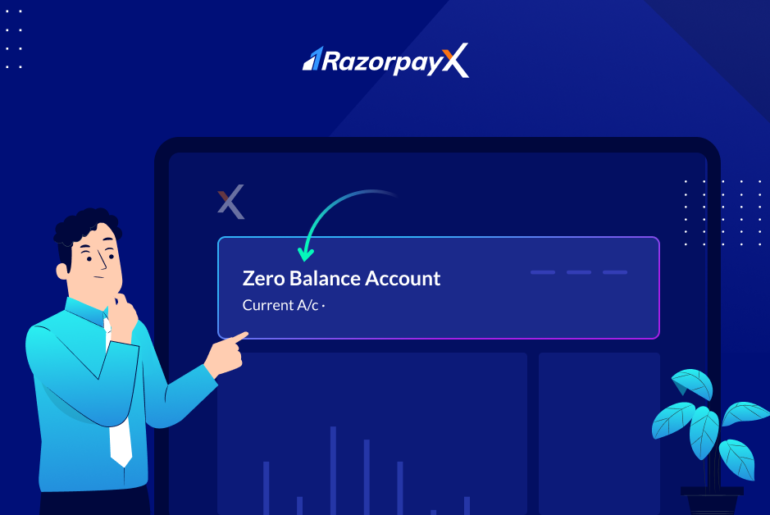Table of Contents
Latest Repo Rate Updates 2023
10th August 2023 – The RBI has kept the repo rate unchanged at 6.5%, the third unchanged update in a row. The last time the RBI changed the repo rate was in February, when it increased the repo rate by 25 b.p.
| 10th August 2023 | Unchanged at 6.5% | Continuing inflationary fears are preventing MPC from cutting the repo rate |
| 8th June 2023 | Unchanged at 6.5% | February rate change helped contain inflation in April, unchanged rate to continue this trend |
| 6th April 2023 | Unchanged at 6.5% | Maintained rate change in February |
| 8th February 2023 | Hiked by 25 b.p to 6.5% | Increased repo rate to control retail inflation |
| 7th December 2022 | Hiked by 35 b.p to 6.25% | To control inflation which is above 6% mark for the tenth month straight |
What is Repo Rate?
Repo rate or repurchase option rate is the rate at which the RBI lends money to commercial banks.
The commercial bank and the central bank, or RBI, would come to an arrangement to repurchase the securities at a predetermined cost. This is carried out when banks are short on cash or must maintain liquidity in the face of uncertain market conditions. The RBI uses the repo rate to control inflation.
Let’s start by understanding how repurchase options work.
Understanding Repurchase Agreements or Repurchase Options
When a commercial bank is short on funds, it may enter into an agreement with the RBI.
Under this agreement, the commercial bank sells government securities to the RBI in exchange for cash. Later, the commercial bank buys these securities back at a higher price.
Repo rate determines the price at which the bank buys the securities back from the RBI.
Repurchase agreements facilitate short-term borrowing and lending of funds between banks and other financial institutions in India. They are an important source of liquidity for commercial banks, especially in times of cash shortfall.
Current Repo Rate in India
The current repo rate in India is 6.50%, after the recent MPC Meeting in June.
The Reserve Bank of India (RBI) uses repo rate to control the economy and curb inflation. The last repo rate hike was in February, when the MPC hiked the repo rate by 25 basis points to 6.50%.
Historical Repo Rates in India
| Date | RBI Repo Rate |
| 08-06-2023 | 6.50% |
| 06-04-2023 | 6.50% |
| 08-02-2023 | 6.50% |
| 07-12-2022 | 6.25% |
| 30-09-2022 | 5.90% |
| 05-08-2022 | 5.40% |
| 08-06-2022 | 4.90% |
| 04-05-2022 | 4.40% |
| 08-04-2022 | 4.00% |
| 10-02-2022 | 4.00% |
| 08-12-2021 | 4.00% |
| 09-10-2021 | 4.00% |
| 06-08-2021 | 4.00% |
| 04-06-2021 | 4.00% |
| 07-04-2021 | 4.00% |
| 05-02-2021 | 4.00% |
| 04-12-2020 | 4.00% |
| 09-10-2020 | 4.00% |
| 06-08-2020 | 4.00% |
| 22-05-2020 | 4.00% |
| 27-03-2020 | 4.40% |
| 06-02-2020 | 5.15% |
| 05-12-2019 | 5.15% |
| 04-10-2019 | 5.15% |
| 07-08-2019 | 5.40% |
| 06-06-2019 | 5.75% |
| 04-04-2019 | 6% |
| 07-02-2019 | 6.25% |
| 01-08-2018 | 6.50% |
| 06-06-2018 | 6.25% |
| 07-02-2018 | 6.00% |
| 02-08-2017 | 6.00% |
| 04-10-2016 | 6.25% |
| 05-04-2016 | 6.50% |
| 29-09-2015 | 6.75% |
| 02-06-2015 | 7.25% |
| 04-03-2015 | 7.50% |
| 15-01-2015 | 7.75% |
| 28-01-2014 | 8.00% |
| 29-10-2013 | 7.75% |
| 20-09-2013 | 7.50% |
| 03-05-2013 | 7.25% |
| 17-03-2011 | 6.75% |
| 25-01-2011 | 6.50% |
| 02-11-2010 | 6.25% |
| 16-09-2010 | 6.00% |
| 27-07-2010 | 5.75% |
| 02-07-2010 | 5.50% |
| 20-04-2010 | 5.25% |
| 19-03-2010 | 5.00% |
How Does Repo Rate Work?
All banks in India can approach the RBI and request a loan in times of fund crunch. The RBI enters into repurchase agreements (repo) with commercial banks. The interest that banks pay for this repo is called the repo rate.
An increment in the repo rate means that banks borrowing money from the RBI will have to pay higher interest rates. As a result, commercial banks will borrow less money, thereby lowering money availability in the market which in turn, curbs inflation. RBI also lowers repo rates under certain macroeconomic conditions such as recession.
The working of repo rate is closely tied to the working of the economy as a whole. Let’s see how the RBI uses repo rate as a tool to curb inflation and support the economy.
Calculation of Repo Rate
The RBI calculates repo rate based on several economic factors and considerations. The process of calculating the repo rate involves the following steps:
1. Economic Analysis: The RBI’s Monetary Policy Committee (MPC) assesses various macroeconomic indicators and economic data to gauge the overall health of the economy. This analysis includes factors like inflation, GDP growth, industrial production, employment figures, global economic conditions, and other relevant economic indicators.
2. Inflation Targeting: One of the primary objectives of the RBI is to maintain price stability, specifically to control inflation. The MPC sets an inflation target, which is the rate at which the RBI aims to keep inflation within a certain range over a specific time frame. This target guides the decision-making process regarding the repo rate.
3. Demand and Supply of Money: If there is excessive liquidity or an excess supply of money, it may lead to inflationary pressures, and the RBI might increase the repo rate to reduce the money supply. Conversely, if there is an inadequate supply of money, the RBI may reduce the repo rate to encourage borrowing and stimulate economic activity.
4. External Factors: Global economic conditions, geopolitical events, and international trade dynamics also influence the RBI’s decision on the repo rate.
5. Forward-looking Approach: The MPC adopts a forward-looking approach, taking into account both current economic conditions and future projections to determine an appropriate repo rate level.
Based on the above analysis, the Monetary Policy Committee arrives at a decision regarding the repo rate. The RBI announces the repo rate in its bi-monthly monetary policy statements, where they also provide their rationale for the rate change, if any.
How Does Repo Rate Affect Inflation?
Inflation is a time of abnormally high prices. This is caused by high purchasing power in the hands of the people.

In this situation, it is up to the government and the central bank to curb inflation by reducing the people’s purchasing power.
When the central bank increases the repo rate, commercial banks find it tougher to get money – this means that commercial banks will be more hesitant to lend money to the public.
When loans are not made readily available to the public, purchasing power comes down. This has a chain effect on the economy which eventually brings prices down.
Repo Rate vs Reverse Repo Rate
The RBI sometimes resorts to borrowing money from banks in times of excess market liquidity. The interest rate that the RBI offers to banks when repaying these loans is called the reverse repo rate.
| Repo Rate | Reverse Repo Rate |
| Repo Rate is the rate at which the RBI lends money to commercial banks. | Reverse Repo Rate is the rate at which the RBI borrows money from commercial banks. |
| An increase in the repo rate means that commercial banks will have to pay more interest on the money they borrow from the RBI. | An increase in the reverse repo rate means that commercial banks will get more incentives to park their funds with the RBI, thereby decreasing the supply of money in the market. |
Repo Rate vs MCLR Rate
| Repo Rate | Marginal Cost Lending Rate |
| Repo rate is the rate at which RBI lends money to commercial banks in case of a shortage of funds. | MCLR is the minimum interest rate at which a commercial bank can lend money to its customers. |
| A higher repo rate makes borrowing from RBI more expensive for commercial banks. | A higher MCLR rate makes borrowing from banks more expensive for customers. |
An increase in the Repo Rate will lead to an increase in the MCLR rate. This is because when RBI hikes the Repo Rate, banks have to pay more to borrow from the RBI.
As a result, they increase the MCLR rate to compensate for the increased cost of borrowing. When the MCLR is high, people will hesitate before borrowing money from banks, once again leading to lower purchasing power.
Impact of Repo Rate on Individuals
The most direct impact of a repo rate hike on individuals is that there is an increase in cost of taking a loan from commercial banks.
Since it becomes more expensive for commercial banks to borrow from the RBI, they might not be able to continue giving loans to individuals at the same rate.
So banks will increase interest rates on loans, making it more expensive for the common man to take out a loan from a bank.
Effect of Repo Rate on Businesses
Just as a hike in repo rate affects an individual’s ability to take out loans, businesses too will find it difficult to raise capital or funding from banks and financial institutions.
Read more: Funding Winter Guide for Businesses
In these times, financial management for businesses becomes incredibly important. Ensuring that business cash flows are as efficient as possible helps in times of cash crunch.
Luckily, fintech solutions like RazorpayX help businesses make banking as seamless and efficient as possible, saving hundreds of hours and reducing the risk of errors by automating banking functions.
RazorpayX allows business owners to open current accounts, pay taxes, schedule payments, pay vendors seamlessly and check invoices all from a single dashboard.
FAQs
What is the latest repo rate?
The current repo rate in India is 6.50% after the RBI increased the repo rate by 25 basis points on 8th February 2023 from the previous repo rate of 6.25%.
What is repo rate and reverse repo rate?
Repo rate is the rate at which the Reserve Bank of India (RBI) lends money to commercial banks.
Reverse Repo Rate is the rate at which the Reserve Bank of India (RBI) borrows money from commercial banks.
Why is RBI increasing repo rate?
The RBI increases repo rate to curb inflation. When the central bank increases the repo rate, commercial banks find it tougher to get money – this means that commercial and retail banks will be more hesitant to lend money to the public.



